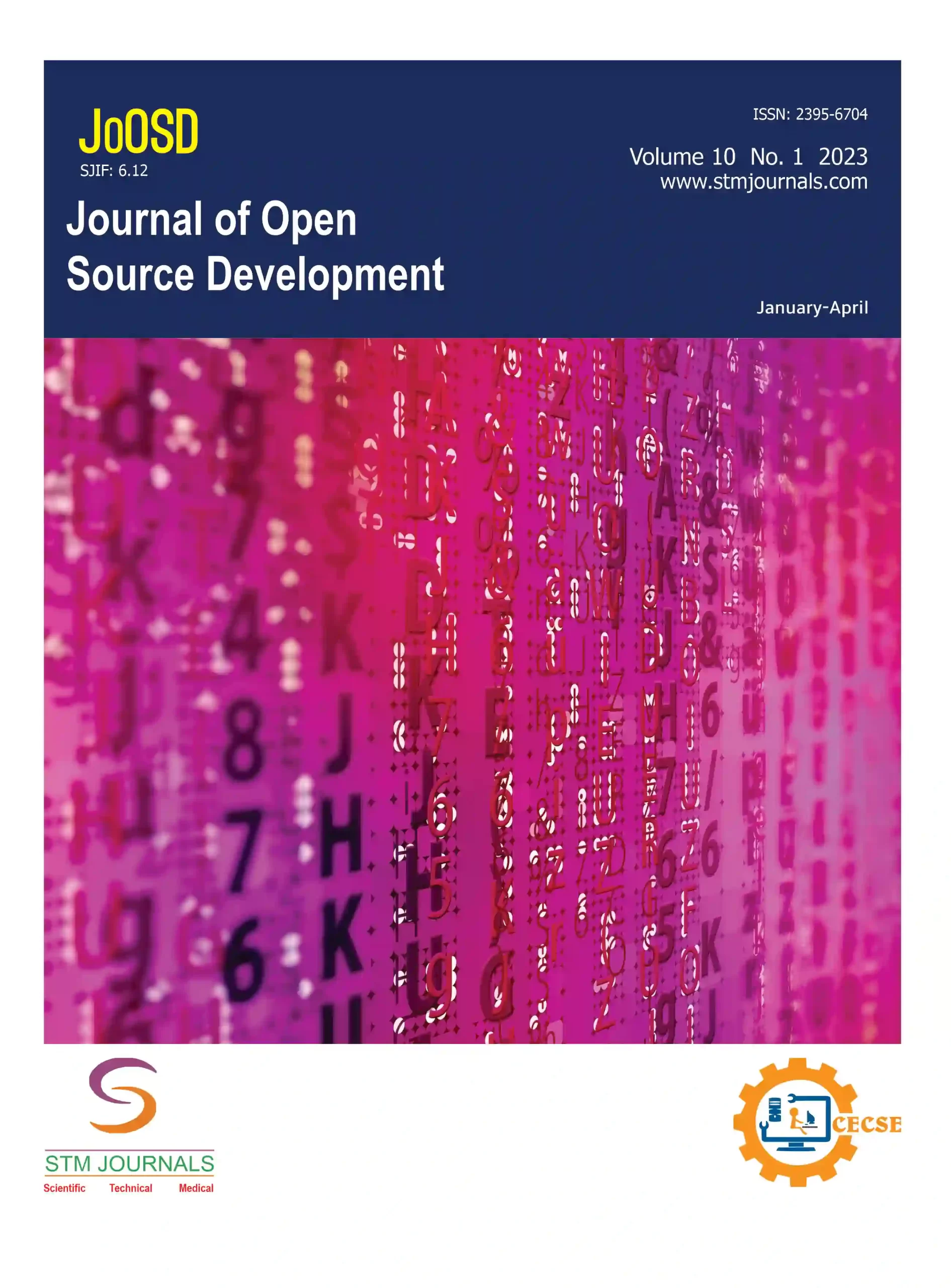[{“box”:0,”content”:”[if 992 equals=”Open Access”]
Open Access
n
[/if 992]n
n
n
n
n
- n t

n
Avanish Kumar Singh, Himanshu Singh
[/foreach]
n
n
n[if 2099 not_equal=”Yes”]n
- [foreach 286] [if 1175 not_equal=””]n t
- Research Scholar, Research Scholar, MCA Thakur Institute of Management Studies, Career Development & Research (TIMSCDR) Mumbai, MCA Thakur Institute of Management Studies, Career Development & Research (TIMSCDR) Mumbai, Maharashtra, Maharashtra, India, India
n[/if 1175][/foreach]
[/if 2099][if 2099 equals=”Yes”][/if 2099]nn
Abstract
nCredit card fraud has become a significant concern in today’s digital economy, with billions of dollars being lost annually to fraudulent transactions. Conventional rule-based approaches frequently prove inadequate in addressing the constantly changing strategies employed by fraudsters. Machine learning methods have emerged as robust solutions for detecting credit card fraud, presenting the capability to accurately identify fraudulent transactions promptly. In this study, we investigate the efficiency of three widely-used machine learning algorithms—Logistic Regression, Random Forest, and Decision Tree—for the detection of credit card fraud. Through an extensive comparative study, we analyse the performance, accuracy, and efficiency of each algorithm on a real-world credit card transaction dataset. Our findings provide valuable insights into the strengths and limitations of these techniques in addressing the challenges posed by credit card fraud.
n
Keywords: Credit Card Frauds; Training system through Decision Tree Classifiers; Random Forest Algorithms, and Logistic Regression.
n[if 424 equals=”Regular Issue”][This article belongs to Journal of Open Source Developments(joosd)]
n
n
n
n
n
n
n[if 992 equals=”Open Access”] Full Text PDF Download[else] nvar fieldValue = “[user_role]”;nif (fieldValue == ‘indexingbodies’) {n document.write(‘Full Text PDF‘);n }nelse if (fieldValue == ‘administrator’) { document.write(‘Full Text PDF‘); }nelse if (fieldValue == ‘joosd’) { document.write(‘Full Text PDF‘); }n else { document.write(‘ ‘); }n [/if 992] [if 379 not_equal=””]n
Browse Figures
n
n
n[/if 379]n
References
n[if 1104 equals=””]n
- Roy A, Sun J, Mahoney R, Alonzi L, Adams S, Beling P. Deep learning detecting fraud in credit card transactions. In2018 systems and information engineering design symposium (SIEDS) 2018 Apr 27 (pp. 129-134). IEEE.
- Randhawa K, Loo CK, Seera M, Lim CP, Nandi AK. Credit card fraud detection using AdaBoost and majority voting. IEEE access. 2018 Feb 15;6:14277-84.
- Xuan S, Liu G, Li Z, Zheng L, Wang S, Jiang C. Random forest for credit card fraud detection. In2018 IEEE 15th international conference on networking, sensing and control (ICNSC) 2018 Mar 27 (pp. 1-6). IEEE.
- Khare N, Sait SY. Credit card fraud detection using machine learning models and collating machine learning models. International Journal of Pure and Applied Mathematics. 2018;118(20):825-38.
- Melo-Acosta GE, Duitama-Munoz F, Arias-Londoño JD. Fraud detection in big data using supervised and semi-supervised learning techniques. In2017 IEEE Colombian conference on communications and computing (COLCOM) 2017 Aug 16 (pp. 1-6). IEEE.
- Thennakoon A, Bhagyani C, Premadasa S, Mihiranga S, Kuruwitaarachchi N. Real-time credit card fraud detection using machine learning. In2019 9th International Conference on Cloud Computing, Data Science & Engineering (Confluence) 2019 Jan 10 (pp. 488-493). IEEE.
- Jiang C, Song J, Liu G, Zheng L, Luan W. Credit card fraud detection: A novel approach using aggregation strategy and feedback mechanism. IEEE Internet of Things Journal. 2018 Mar 15;5(5):3637-47.
- Yang MY, Kumaar S, Lyu Y, Nex F. Real-time semantic segmentation with context aggregation network. ISPRS journal of photogrammetry and remote sensing. 2021 Aug 1;178:124-34.
- Sun Y, Cheng H, Zhang S, Mohan MK, Ye G, De Schutter G. Prediction & optimization of alkali-activated concrete based on the random forest machine learning algorithm. Construction and Building Materials. 2023 Jul 3;385:131519.
- Amro A, Al-Akhras M, Hindi KE, Habib M, Shawar BA. Instance reduction for avoiding overfitting in decision trees. Journal of Intelligent Systems. 2021 Jan 1;30(1):438-59.
nn[/if 1104][if 1104 not_equal=””]n
- [foreach 1102]n t
- [if 1106 equals=””], [/if 1106][if 1106 not_equal=””],[/if 1106]
n[/foreach]
n[/if 1104]
nn
nn[if 1114 equals=”Yes”]n
n[/if 1114]
n
n
n
| Volume | 11 | |
| [if 424 equals=”Regular Issue”]Issue[/if 424][if 424 equals=”Special Issue”]Special Issue[/if 424] [if 424 equals=”Conference”][/if 424] | 01 | |
| Received | February 29, 2024 | |
| Accepted | March 26, 2024 | |
| Published | April 5, 2024 |
n
n
n
n
n
nn function myFunction2() {n var x = document.getElementById(“browsefigure”);n if (x.style.display === “block”) {n x.style.display = “none”;n }n else { x.style.display = “Block”; }n }n document.querySelector(“.prevBtn”).addEventListener(“click”, () => {n changeSlides(-1);n });n document.querySelector(“.nextBtn”).addEventListener(“click”, () => {n changeSlides(1);n });n var slideIndex = 1;n showSlides(slideIndex);n function changeSlides(n) {n showSlides((slideIndex += n));n }n function currentSlide(n) {n showSlides((slideIndex = n));n }n function showSlides(n) {n var i;n var slides = document.getElementsByClassName(“Slide”);n var dots = document.getElementsByClassName(“Navdot”);n if (n > slides.length) { slideIndex = 1; }n if (n (item.style.display = “none”));n Array.from(dots).forEach(n item => (item.className = item.className.replace(” selected”, “”))n );n slides[slideIndex – 1].style.display = “block”;n dots[slideIndex – 1].className += ” selected”;n }n”}]


